Video Tutorial Structure of Benzene
Quick Notes Structure of Benzene
- Benzene is cyclic hydrocarbon. Each molecule is made up of six carbon atoms and six hydrogen atoms (C6H6).
- The Kekulé structure shows the carbon bonding in benzene as alternating single and double bonds.
- Bond length data and enthalpies of hydrogenation show this to be incorrect.
- Each carbon atom has an un-bonded electron in a p-orbital. The p-orbitals from all six carbon atoms merge to create two rings of electron density, spreading the electrons throughout the carbon ring (delocalised electrons).

- Due to the rings of delocalized electrons, benzene is easily attacked by electrophiles.
- Compounds that contain cyclic carbon rings with delocalised electron bonding (π bonding) are called aromatic compounds.
- The study of these compounds is called aromatic chemistry.
Full Notes Structure of Benzene
Hydrocarbons can be cyclic, with the first and last carbon in a chain bonding back on themselves forming a 'ring' of carbon atoms. A bit like a chain that links back to itself to form a necklace.
Cyclohexane (C6H12) is a common example of a cyclic hydrocarbon, containing six carbon atoms that are linked to one another.
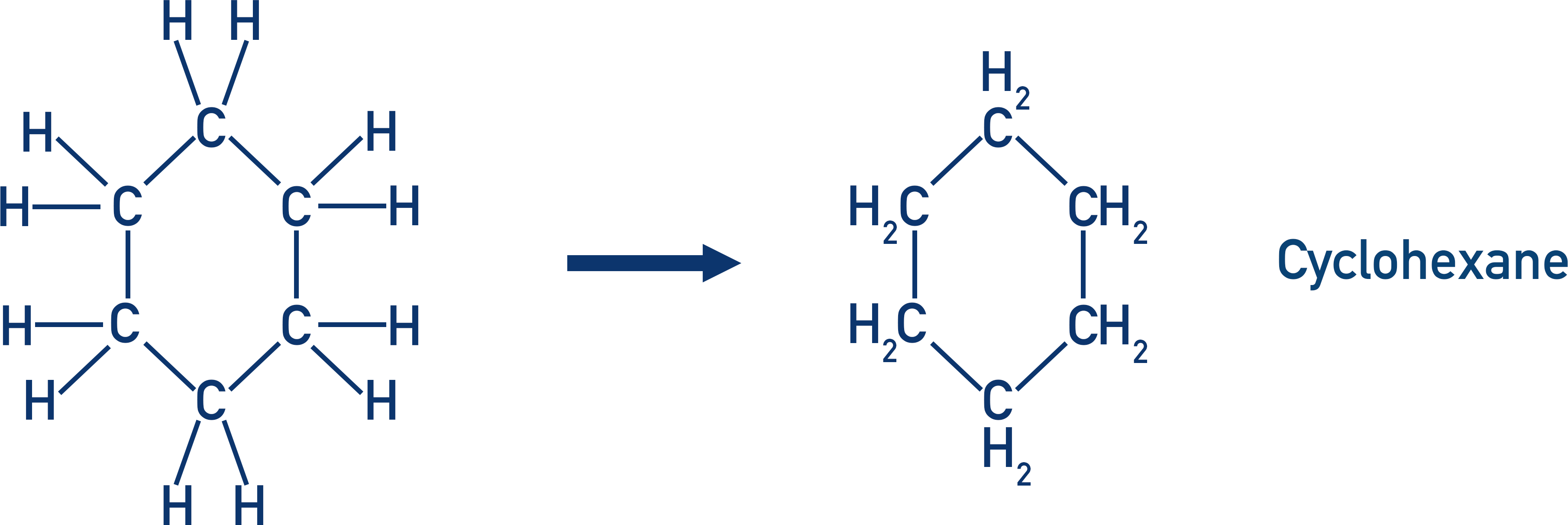
A specific example of a cyclic hydrocarbon is called benzene. In benzene, there are six carbon atoms arranged in a ring and each one is bonded to a single hydrogen atom, giving the molecular formula C6H6. The bonding that takes place between carbon atoms in benzene is what makes it so interesting and unique.
If we look at cyclohexane, it’s clear to see that each carbon atom forms two single bonds with other carbon atoms and two single bonds with hydrogen atoms. This makes sense as carbon can form four covalent bonds.
In benzene, however, things get a little more complicated. If we draw benzene (C6H6) out in the same way as cyclohexane, each carbon atom is now only forming three single bonds.
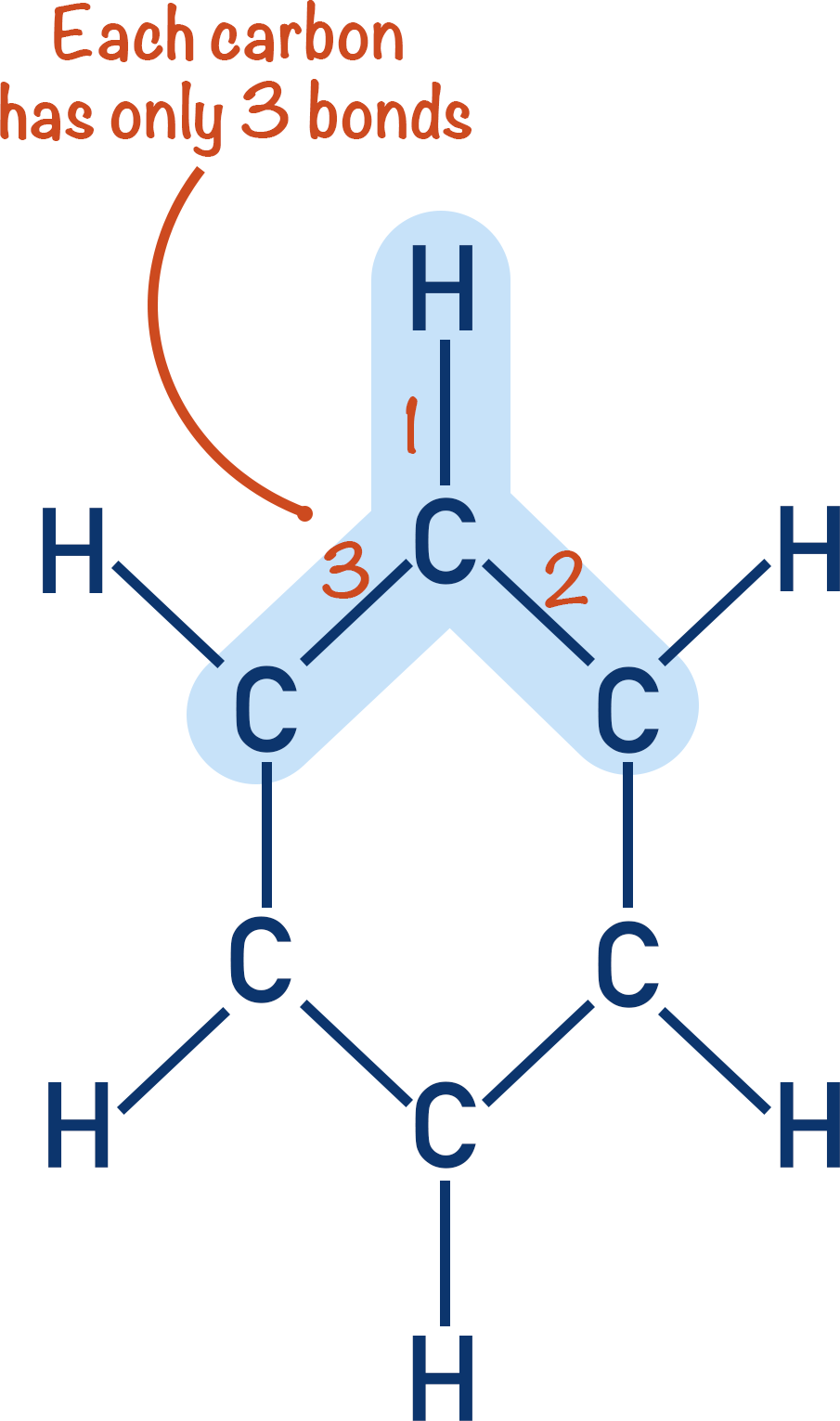
The obvious thing to assume is that each carbon atom forms a double bond with another carbon atom, meaning each carbon atom has four bonds in total. This gives three double bonds in the whole molecule; this representation of benzene is called the Kekulé structure. Another name for the Kekule structure of benzene is cyclohexa-1,3,5-triene.
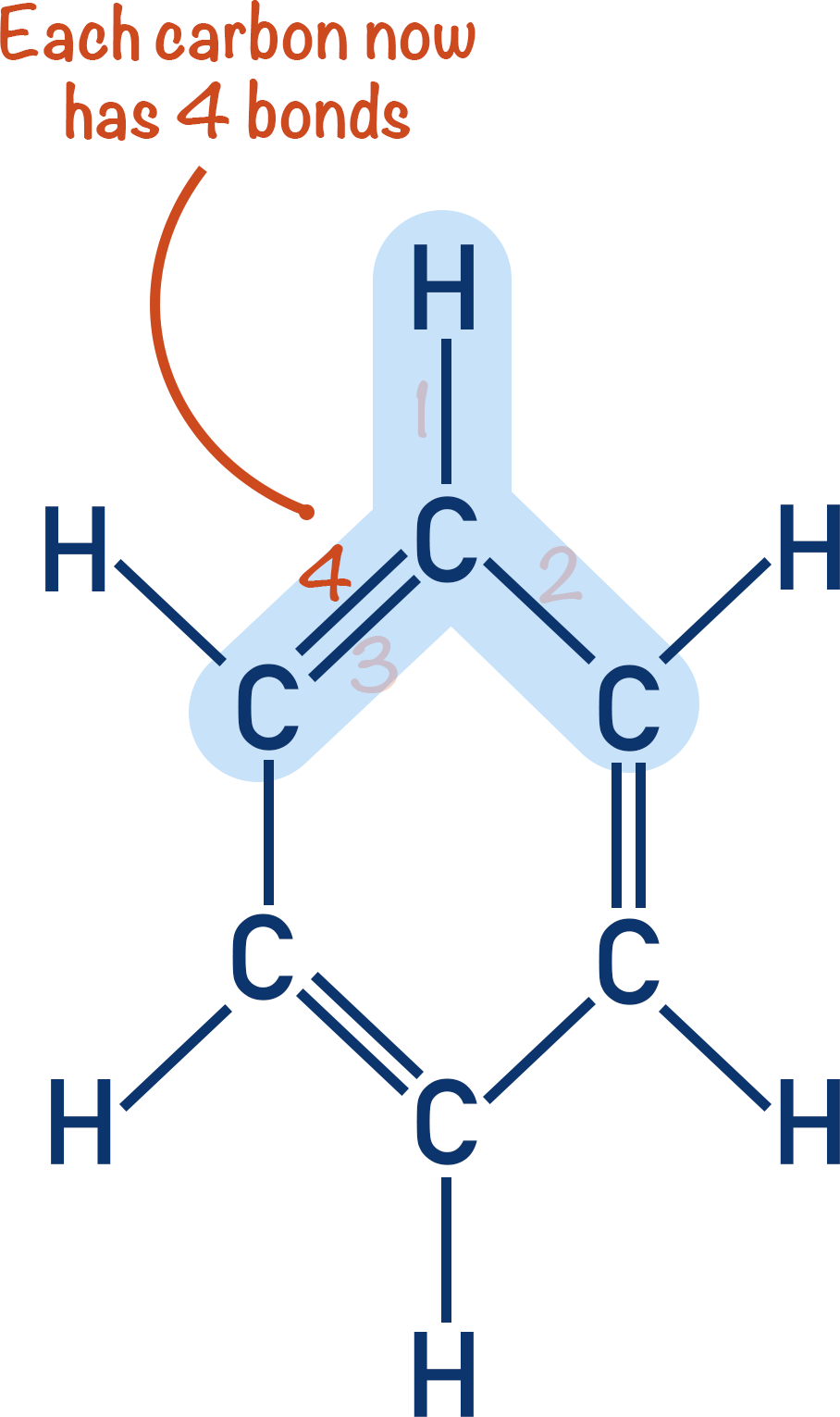
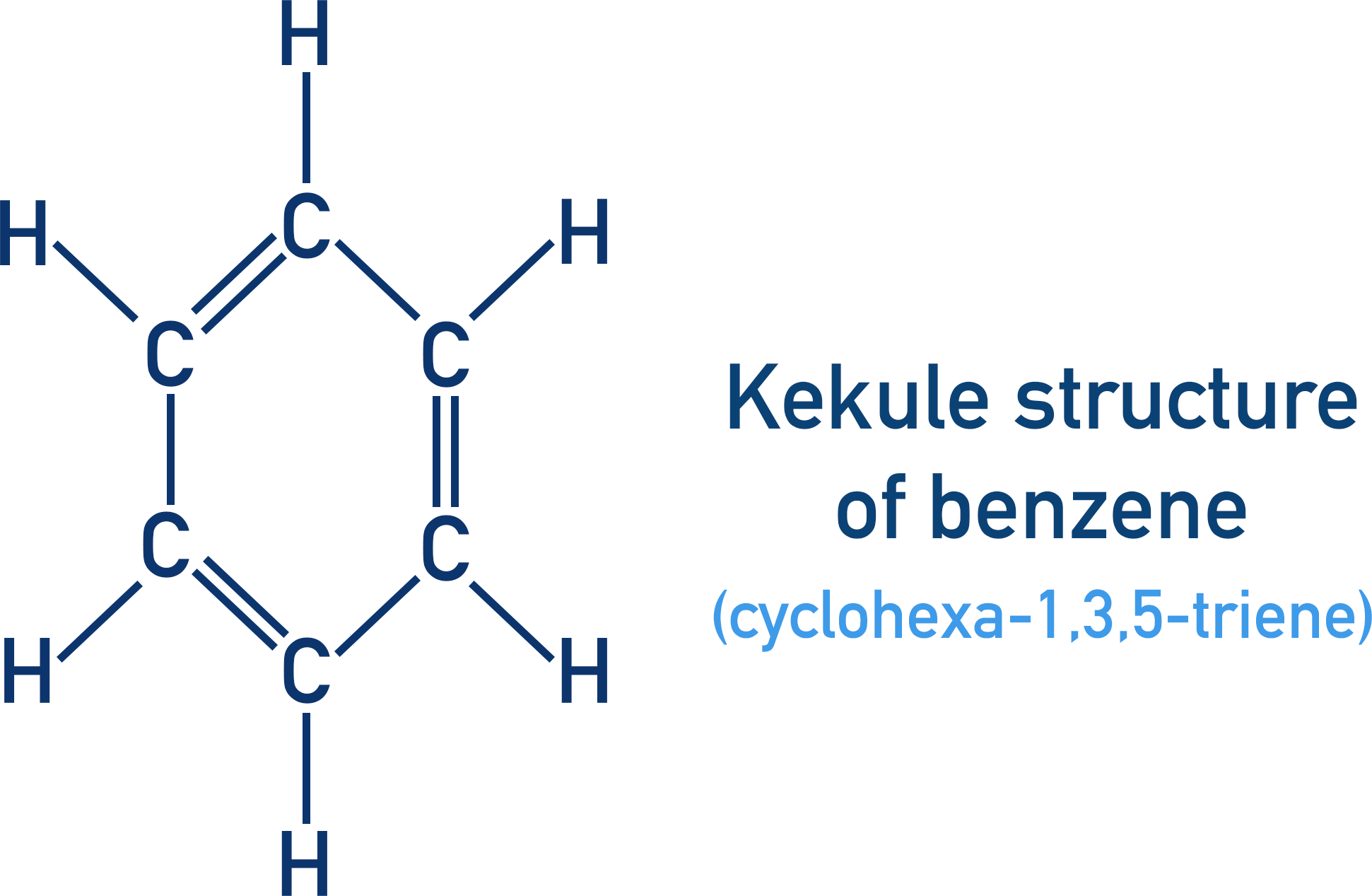
The Kekulé structure does address the number of bonds each carbon atom makes, but does not fully explain the structure of benzene when we look at other properties the molecule has.
Problems with the Kekule Structure
There are two main problems with the Kekulé structure: bond lengths and hydrogenation enthalpy for benzene.
Bond Lengths
Single carbon-carbon bonds have a different length to carbon-carbon double bonds.
C-C bond length is 0.154nm
C=C bond length is 0.134nm
If the kekulé structure was correct and there are alternating single and double bonds, the shape of benzene couldn't be a perfect hexagon. It would have a 'skewed' shape and the bond angles between carbon atoms wouldn't all be the same.

Experimental data shows that all the carbon bonds within benzene have a bond length of 0.139nm.
Equal cabon bond lengths give the carbon ring a perfect hexagonal shape and equal bond angles (120o) between carbon atoms.
This carbon bond length in benzene (and its hexagonal shape) does not make sense if we think of only single and double carbon bonds being present, so the Kekulé structure cannot be an accurate representation of the carbon bonding.
Hydrogenation Enthalpy
Double carbon bonds can be hydrogenated (reacted with H2 to break the double bond and add hydrogen atoms to each carbon). As single carbon-hydrogen bonds are more stable than double carbon bonds, when a double bond is hydrogenated, energy is released.
In cyclohexene, there is one carbon-carbon double bond. When hydrogenated, the amount of energy released per mole of cyclohexene is 120kJ. The enthalpy of hydrogenation is -120kJmol-1. (Remember energy is released – negative enthalpy change).
According to the Kekulé structure (cyclohex-1,3,5-triene) of benzene, there are three double bonds. If one double bond in cyclohex-1-ene releases 120kJ per mol when hydrogenated, three times this amount of energy should be released when the three double bonds in benzene are hydrogenated.
3 x -120kJmol-1 = -360kJmol-1.
This is the predicted enthalpy of hydrogenation, but the actual enthalpy change that occurs when benzene is hydrogenated is -208kJmol-1.
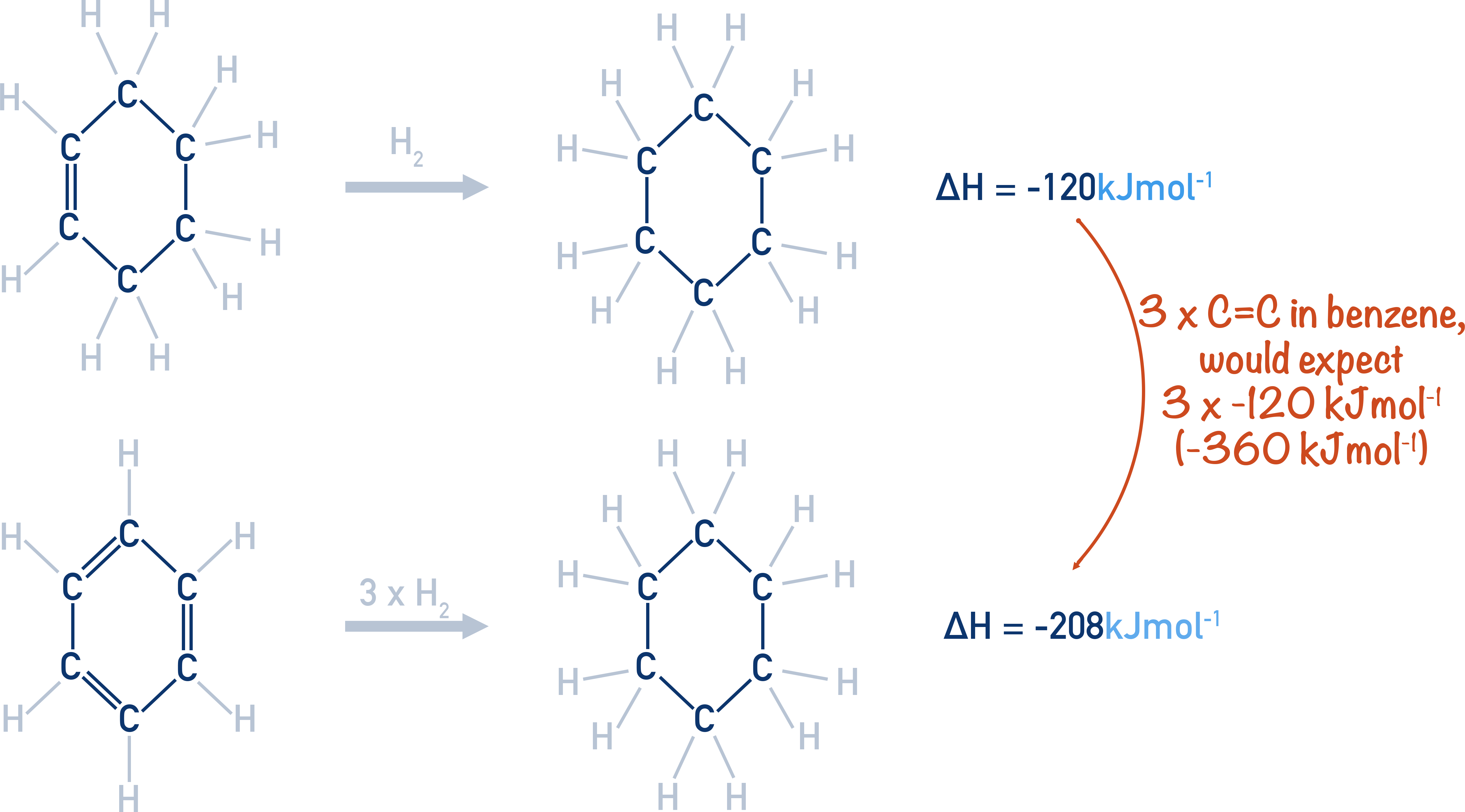
Clearly there are not three double bonds in benzene.
What is actually going on in benzene?
To really understand the bonding in benzene, we need to look at the electron orbitals around each carbon atom. Remember sigma bonds are formed when orbitals perfectly overlap, giving single covalent bonds. See Sigma and Pi Bonding.
Each carbon atom has three sigma bonds (see Alkenes Bonding), leaving one electron left over. This electron is in a p-shaped orbital.
Due to orbital hybridisation (not required understanding for A-level chemistry, but very interesting!), the sigma bonds are all in the same plane – this means you could take a slice through the molecule and it would pass through all three bonding atoms.The p-orbital sticks up and below this plane.
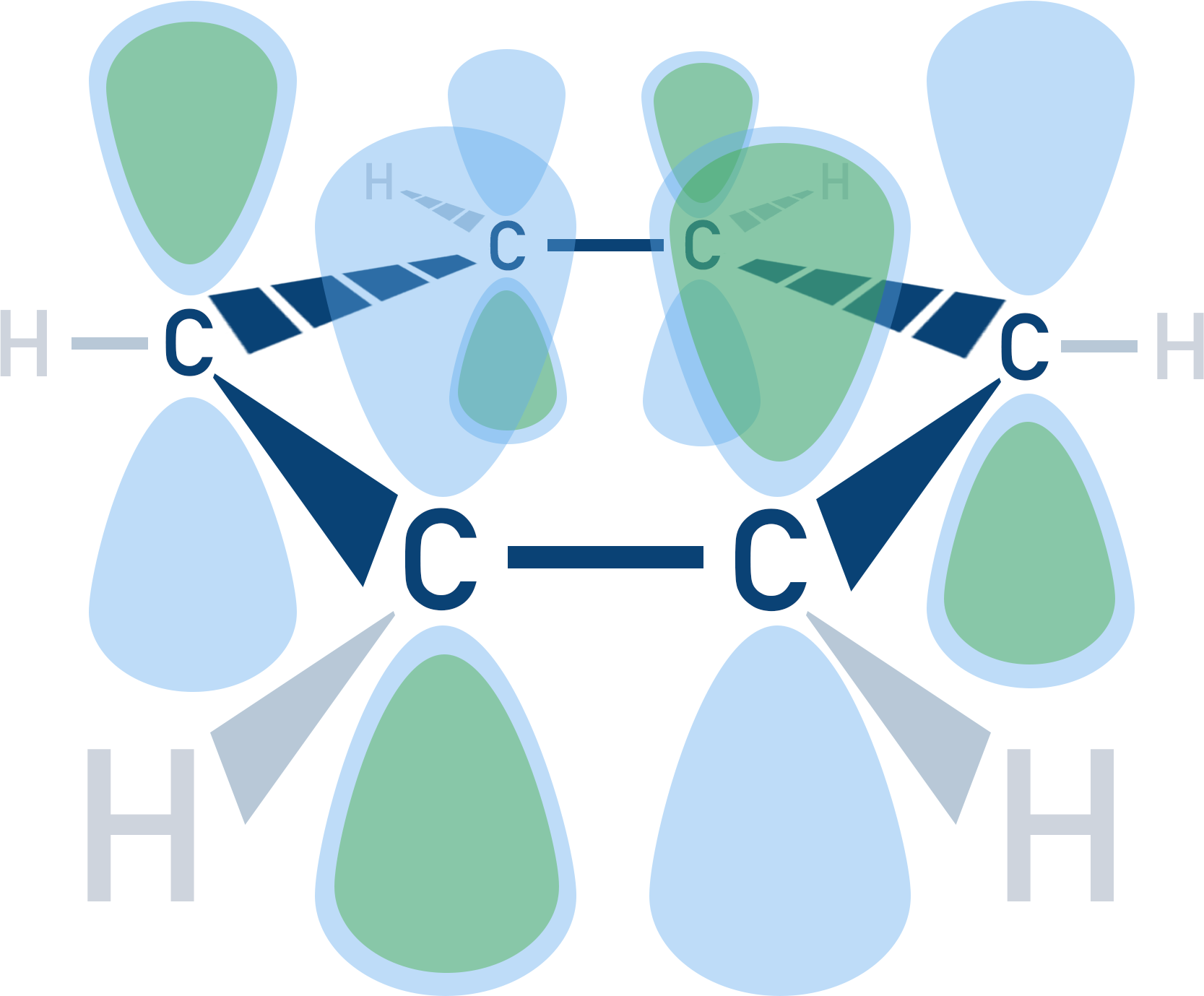
The electrons in each p-orbital repel each other. To minimise this repelling, they alternate above and below the plane of the carbon atoms.
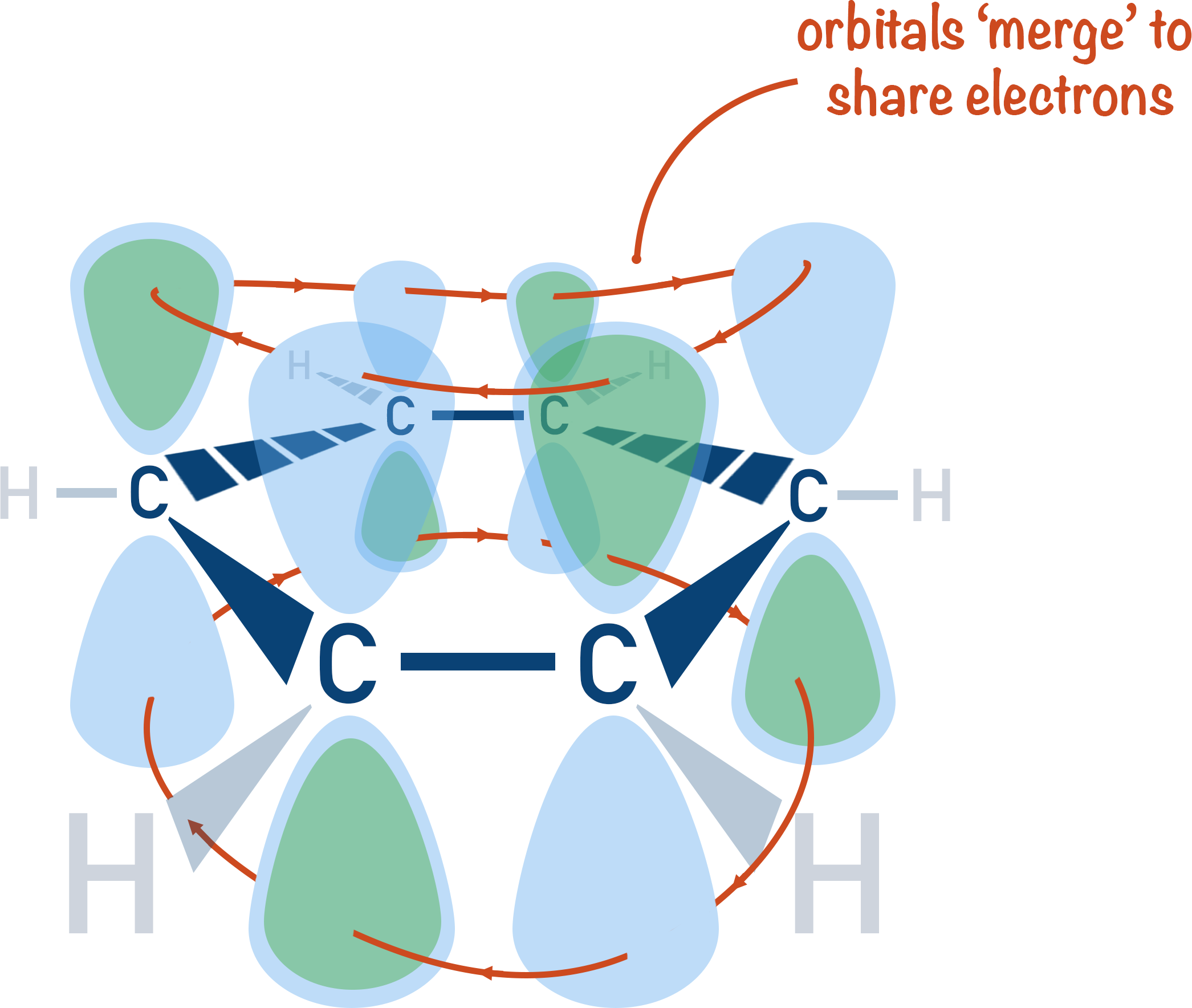
There are now three electrons ‘above’ and three electrons ‘below’ the plane of the carbon and hydrogen atoms. These half-filled p-orbitals are not stable and, rather than stay in a p-orbital, the electrons spread out evenly in two regions – one above and one below the plane. Technically, each of the two regions form a pi-bond (merging of p-orbitals to create a bonding orbital). This is why benzene is considered to have a pi-bonding system.
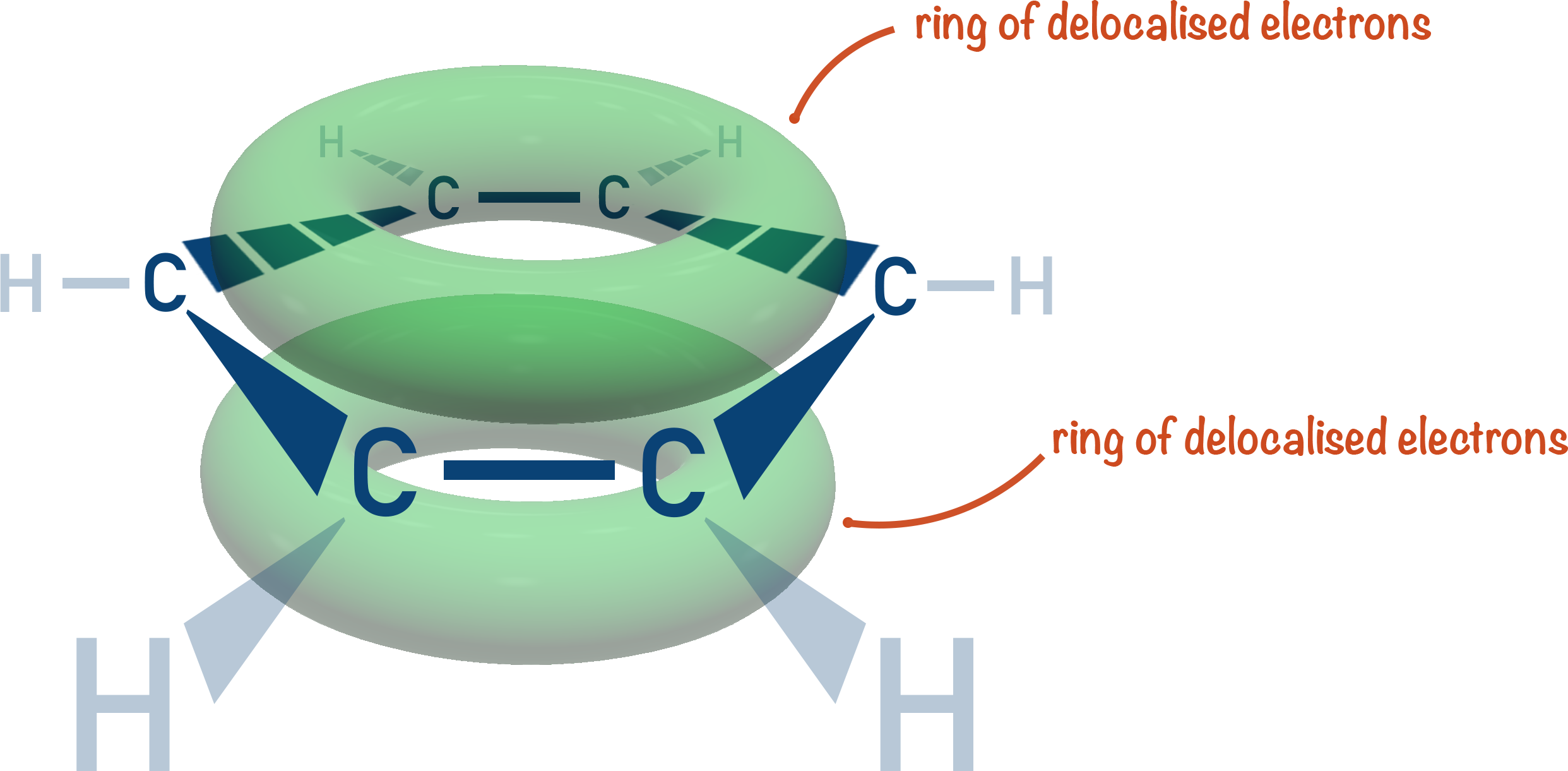
The electrons are no longer held in p-orbitals and become delocalised electrons. Each carbon atom has ‘access’ to a full outer shell of electrons, and all bonds are the same length (and have the same bond energies).

Due to the above, it’s not possible to draw the individual carbon bonds as either single or double bonds, so a circle is used in the middle of the ring of carbon atoms to represent delocalised electrons.
Electrons have a negative charge, and the circle represents an area of high electron density that electrophiles are attracted to. This is why benzene reacts well with electrophiles.
Organic compounds that contain a cyclic carbon ring with the same bonding system as in benzene are called aromatic compounds. Benzene is an aromatic compound.
We’ve launched our new site! 🎉
Course-specific notes with built-in search!
AP • A-Level (AQA • CIE • Edexcel • OCR) • IB • NCERT 11 + 12
over 750+ new pages and 3,500 images.
Visit the new homepage
